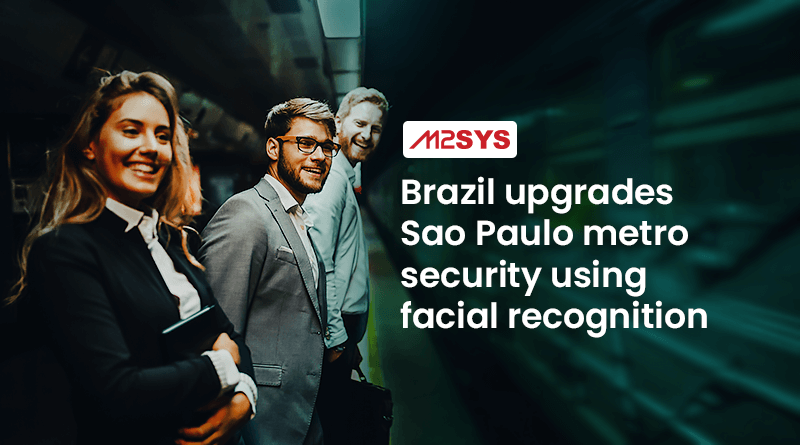Brazil Upgrades Sao Paulo Metro Security Using Facial Recognition
The Sao Paulo Metro Trains Company and the Sao Paulo Metro, which is also known as the Metrô, work together to provide Latin America’s largest metropolitan rail transportation network, serving the city of Sao Paulo. The Brazilian government recently installed a facial recognition system to improve the overall security of the Sao Paulo metro.
Intelligent Security System for Sao Paulo metro
The So Paulo Metrô in Brazil has developed a facial recognition system to protect passengers on Line 3-Red, which contains over 1,400 cameras spread over 18 stations. Last month, the Governor of the State of Sao Paulo installed a facial recognition system in the Metrô Operational Control Center. Metro will install new cameras on numerous additional train routes, including Line 2-Green and Line 1-Blue, over the next 18 months, both of which will utilize advanced video intelligence. In addition, the next update to the Metro security system has already begun, adding 55 new metro stations to its monitoring area of over 5,000 cameras over the next 30 months.
The whole Sao Paulo Metro system is constantly monitored by an electronic monitoring system linked to a command center, enabling real-time detection of suspicious behaviors and quickly activating alerts for security operators. The system uses AI-powered technology to analyze images automatically, enhancing each operator’s ability to monitor and respond to events occurring anywhere in the system. In addition to respecting and carefully adhering to Brazil’s General Data Protection Act, It offers object recognition and tracking, detection of incursions into prohibited areas, detection of unaccompanied minors, missing individuals, odd movements on platforms, and precise passenger flow counts. Partners included the City Hall of the Capital City and the Secretariat of Public Security.
According to Daniel Feitosa, ISS’s Regional Director for Brazil, metro system operators now have extra possibilities to protect their operations, workers, and public users due to introducing more powerful video analytics into standard video monitoring systems. AI-powered security features such as item tracking, facial recognition, and identifying unattended items or children are available for deployment across large and small networks. ISS is committed to improving global safety and security by offering superior transportation system solutions. According to Marcelo Lemos, the head of the So Paulo Metrô’s Operation Engineering Department, the So Paulo Metrô is a crucial economic and sociological infrastructure that supports more than 21 million people. Furthermore, this newly expanded system will help boost safety and security for our operational crew, passengers, and the general public across the Metrô system.
Leveraging AI-powered technology with powerful video analytics
The system uses AI-powered technology to analyze images automatically, enhancing each operator’s ability to monitor and respond to events occurring anywhere in the system. Furthermore, it enables accurate passenger counting, object identification and tracking, detection of intrusions into restricted areas, identification of unaccompanied children, missing persons, abnormal movements on platforms, and detection of unnatural passenger flow patterns, all while respecting and strictly complying with Brazil’s General Data Protection Act. Partners included the City Hall of the Capital City and the Secretariat of Public Security. According to Daniel Feitosa, ISS’s Regional Director for Brazil, metro system operators now have extra possibilities to safeguard their operations, workers, and public users due to incorporating more powerful video analytics into standard video monitoring systems. Furthermore, AI-driven security solutions such as item tracking, facial recognition, and the detection of unattended items or children, according to Daniel Feitosa, may be employed in both large and small systems. The International Space Station (ISS) is committed to improving international security by providing improved transit options.
The technological challenges associated with putting such ideas into action make the process far from easy. And that’s why many opt for turnkey biometrics solutions. It is sensible to look at biometric turnkey solution providers since biometric projects are notoriously tough to implement. If you’re interested in working with us on a biometrics-related project, please get in touch as soon as possible.











